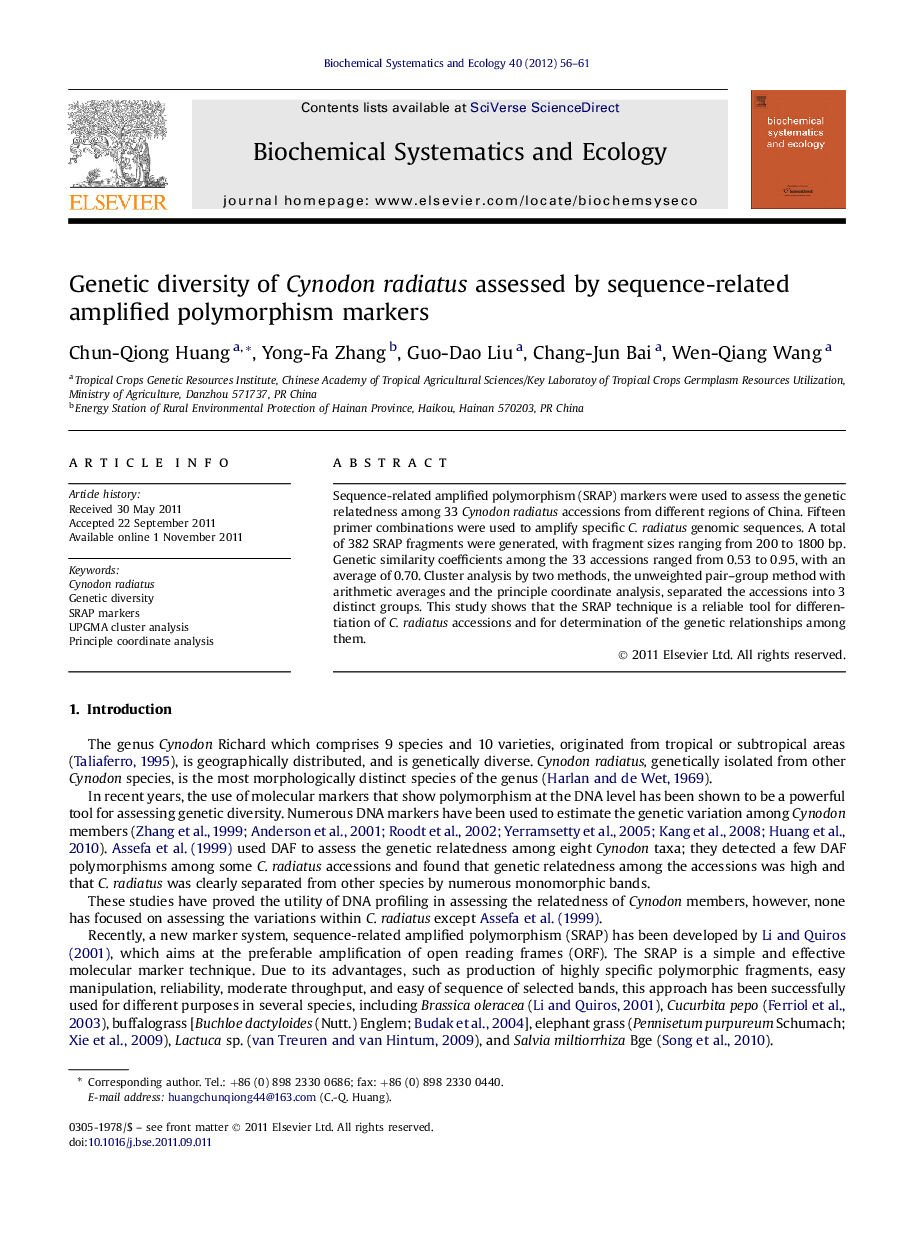| Article ID | Journal | Published Year | Pages | File Type |
|---|---|---|---|---|
| 1351845 | Biochemical Systematics and Ecology | 2012 | 6 Pages |
Sequence-related amplified polymorphism (SRAP) markers were used to assess the genetic relatedness among 33 Cynodon radiatus accessions from different regions of China. Fifteen primer combinations were used to amplify specific C. radiatus genomic sequences. A total of 382 SRAP fragments were generated, with fragment sizes ranging from 200 to 1800 bp. Genetic similarity coefficients among the 33 accessions ranged from 0.53 to 0.95, with an average of 0.70. Cluster analysis by two methods, the unweighted pair–group method with arithmetic averages and the principle coordinate analysis, separated the accessions into 3 distinct groups. This study shows that the SRAP technique is a reliable tool for differentiation of C. radiatus accessions and for determination of the genetic relationships among them.
► SRAP markers were used to assess the genetic diversity of Cynodon radiatus. ► 15 primer combinations were used to amplify specific C. radiatus genomic sequences. ► 382 SRAP fragments were generated. ► Genetic similarity coefficients ranged from 0.53 to 0.95. ► Cluster analysis separated the accessions into 3 distinct groups.
